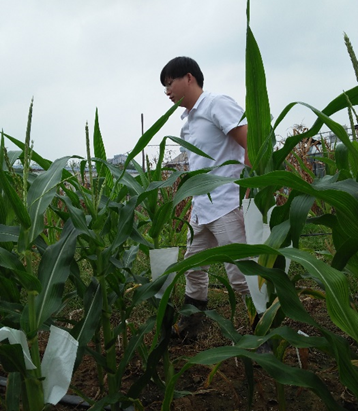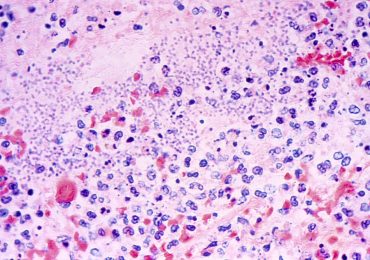In this blog post, Yunxian Xu discusses his study “Mycorrhizal fungi alter root exudation to cultivate a beneficial microbiome for plant growth“, which has been shortlisted for Functional Ecology’s 2023 Haldane Prize for Early Career Researchers.
About the paper:
Arbuscular mycorrhizal (AM) fungi are a class of soil microorganisms that are widespread in terrestrial ecosystems and can form a reciprocal symbiotic relationship with most terrestrial plants to promote the uptake of nutrients such as nitrogen, phosphorus and potassium by their hosts.
Although studies of whole-genome sequencing of several AM fungal strains have shown that AM fungi have few ectoenzyme profiles and relatively weak direct activation of soil organic nutrients compared to the genomes of saprophytic or ectomycorrhizal fungi. Therefore, rhizophere microorganisms associated with AM fungi are key factors that influence the efficiency of nutrient uptake by the mycorrhizal pathway. However, many issues remain unclear in the plant root system-AMF-rhizosphere interactions. Therefore, we aim to investigate how AM fungi recruit microbes and intrinsic mechanisms.
In this study, we set up three types of AM fungi and Lotus japonicus as subjects in three controlled culture experiments. First, we use native and sterilized soils to explore the relationship between AM fungi and rhizosphere bacteria by measuring biomass, phytotrophic nutrients, enzyme activities, and quantification of functional genes in rhizosphere bacteria. Second, we choose a mycorrhizal symbiotic mutant to verify the AM fungal-bacterial interactions and to confirm the interactions of the core rhizosphere bacteria with AM fungi. Third, we added synthetic microbiomes and AM fungi to the rhizosphere of plants and analysed the root chemosensory substances in the AM fungal symbiosis to verify the mechanism. We found that mycorrhizal symbiosis stimulated root secretion of chemosensory substances by multi-omics joint analysis, such as arachidonic acid, which recruited beneficial microbiota for the host to promote plant growth and soil nutrient turnover.
Our findings provide direct evidence that AM fungal infection simulated root exudation changes and recruited a beneficial microbiome into the host rhizosphere, increasing plant growth and soil nutrient turnover.
About the research
The main objective of this paper was to explore the mechanism of how AM fungi shape the bacterial communities of the rhizosphere and their functions in the roots of AM fungal symbiotic roots. We hypothesized that (1) the presence of AM fungi would attract specific core rhizospheric bacteria to promote plant growth; (2) the mineralization-related enzymatic activities and functional genes of N and P would be higher with AM fungi; and (3) the metabolic pathways induced by alteration of root exudation with AM fungi would contribute to attract specific core rhizospheric bacteria.
The key findings of this research paper are as follows.
1. We confirm the interactions between AM fungi and bacteria using a mutant defective in mycorrhiza of Lotus japonicus.
2. We found that AM fungi–bacteria interactions enhanced host plant growth and identified a core bacterial group that uniquely improved host plant growth. Meanwhile, we further investigated the mechanisms by adding core bacteria and AM fungi to the plant rhizosphere in another experiment.
3. We identified allelopathic substances secreted by AM fungal colonizing host roots that recruit rhizosphere bacteria by multi-omics joint analysis.
Our findings provide direct evidence that mycorrhizal infection simulated root exudation, such as arachidonic acid, recruited beneficial bacteria to the host rhizosphere, helping plants to obtain more nutrients. As a follow-up on this study, we have focused on the extraction of key gene in plants associated with plant-AM fungi-bacteria interaction and exploring the molecular mechanism of AM fungi interacted with rhizosphere bacteria to mediate plant nutrient uptake.
About the author:
I grew up in the Chizhou countryside, a beautiful place in China. When I was a child, I wondered about everything around me, particularly the micro-world. During my university studies, I was exposed to research related to microbial function, and I was instantly attracted to the amazing microbes. While working on my Ph.D., I was introduced to another amazing microbe, AM fungi, which seem to improve plant growth and increase plant resistance on their own. It was this amazing phenomenon that influenced my future career and led me to a love affair with AM fungi. When I started working in ecology at the School of Ecology and Environment in Yunnan University, I found that AM fungi can have beneficial effects on ecosystems, which quickly interested me in the field of why different microbiomes, especially AM fungi, can interact with each other and plants to perform their function in different ecosystems.
Now, I am studying the function and interaction of AM fungi and bacteria on plant growth and their usage in grassland recovery. I am interested in the mechanisms that allow changes in plants when AM fungi and other microbes are in their environment. Furthermore, I am interested in how and which microbe communities were attracted by different plants colonized by different AM fungi. Thus, in the future, I hope to find beneficial bacteria and AM fungi for plants, discover chemicals that regulate plant-microbe interactions, and explore synthetic pathways for relevant chemicals. Through scientific research, I hope to provide a basis for the development of complex mycorrhizal fungal compounds with other microbes. In addition, I hope to translate the relevant research work into mycorrhizal products that can be applied in agriculture and ecological restoration.
Leave a comment





